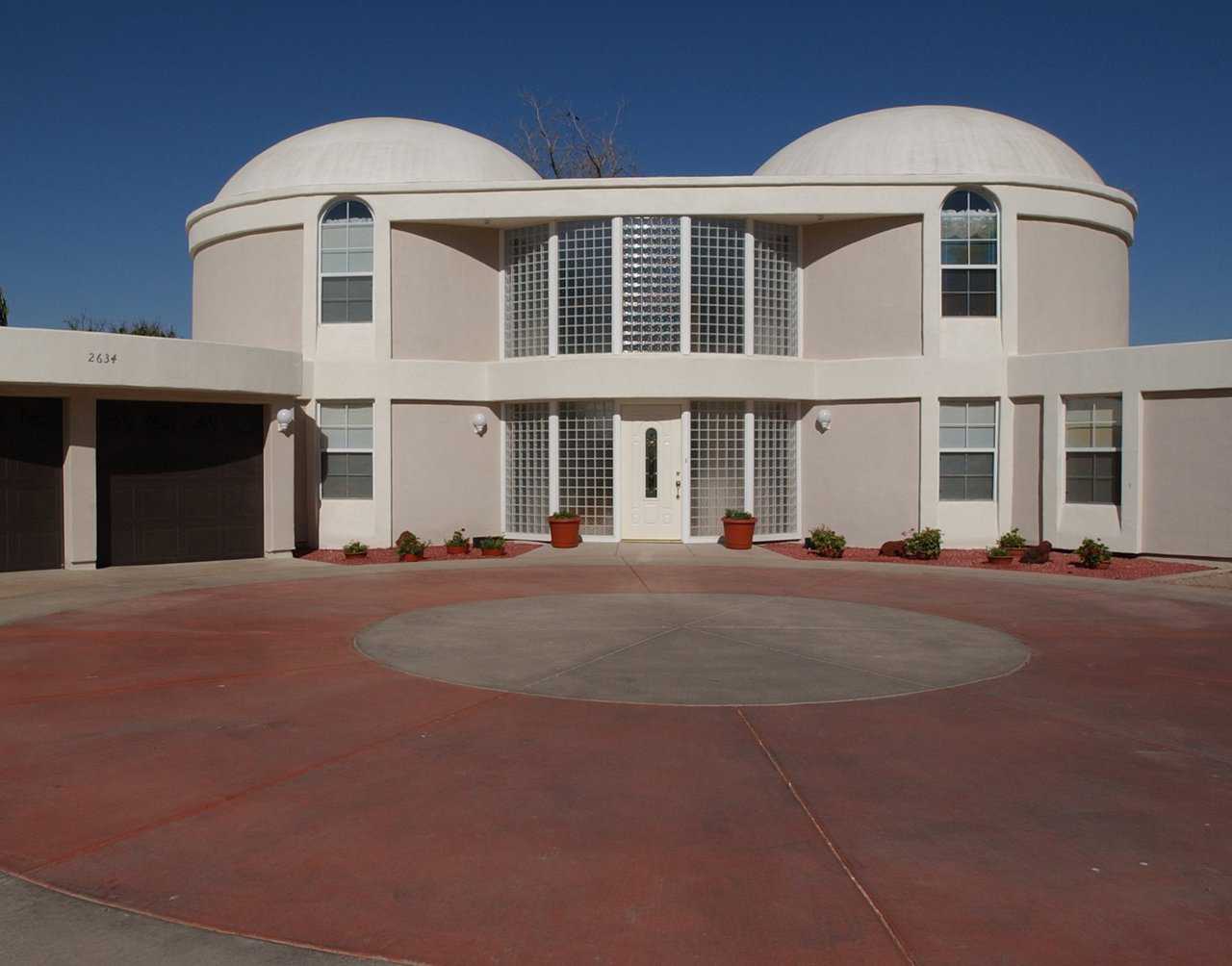Three areas of testing
“A very satisfying experiment!” That’s how Rick Crandall, MDI’s consulting architect, describes the construction of his new Monolithic Dome home in Lehi, Arizona, that he and wife Melody call Le Chateau de Lumiere or Castle of Light.
Rick readily admits that between January 3, 2000 and January 3, 2001 he and Melody and their contractor Robert Johnson of Stetson Construction were not just building another Monolithic Dome home. “The purpose of this project was to do things that had not yet been done in other domes,” he said. “We had three goals — or areas of testing.”
The first test
“The first test was social acceptance,” Rick said. “We purposely applied and didn’t withhold any funds from architectural treatment because we wanted to measure or gauge the acceptance of domes as homes by people from very exclusive neighborhoods. And we found that while everyone has not accepted them 100%, we got a very high approval rating. So, domes are appealing to a different market, to people from homes twice the size and cost of ours.”
An original photograph of a French farmhouse inspired the exterior and interior motif of the Crandalls’ castle, consisting of a central core structure flanked by two, Monolithic Dome towers. Rick said, “The only difference between our design and the Seventeenth Century original is that the original had conical pieces atop its towers, while we have domes.”
A glazed outer wall, 14 feet high and 16 feet wide, in what looks like glass block, but is really more energy-efficient plastic, fronts the central, two-story, core section. It allows a tremendous amount of light to penetrate the interior. But besides that, its sparkling translucency inspires a compelling expectation — one simply must open that front door and see beyond.
Inside the curved entry hall, a huge mural depicting water gently falling into a garden pond adds to the drama and feeling of spaciousness. At the other end of the core, a curved kitchen, that opens onto a patio, echoes the shape of the entry hall.
A winding stairway intersects the middle of the entry area and curls gently up to the second floor balcony. Throughout the core, graceful arches and areas built curvilinearly complement each other and the rounded dome look of the exterior.
The two Monolithic Dome towers, each with a diameter of 23 feet and vertical walls 16 feet high, have no internal partitions on either their first or second floor. Instead, they are divided horizontally so that each dome houses two, very large rooms: south tower with family room and master bedroom; north with living room and guest bedroom. Rick said, "We did not subdivide the domes, and, as far as I know, that has never been done. So, if you lie on your back, on a bed in one of the bedrooms and look up, you see the whole, completed dome. That creates its own feeling and character.
“Because of the way the domes were assembled with a central core but no corridor space, in our 1900 square feet of living space, we actually have fewer rooms than in our previous house, but each room is much larger,” he added.
The second test
Their second goal or area of testing involved experimenting with different construction means and methods. They experimented a lot with attachments, looking for the best, most economical ways in which to do them. Sometimes they used proven procedures. But at other times, they would complete the attachment and mechanically break it and start over.
Rick said, “In some cases, we actually tore the house apart two or three times in the testing. We wanted to see what was the best, most economical way of doing things. We experimented with attaching items to the Airform, the foam and the shotcrete. We used different bolting methods — anchor bolts, spikes, and so on. It was a large experiment. We had a list of 163 things to try or test.”
A considerable amount of effort went into seeing if products manufactured for conventional homes, such as counter tops, cabinets, shower curtain rods and drapery hardware could be curved, rounded or bent and adapted to the dome. “We bent and broke a lot of wood, gypsum board and Masonite to find what could be curved or bent and how,” Rick confessed.
By the end of the project, Rick claims they had “reeducated” themselves on some of the oldest wood-bending techniques that date back to the 19th and 20th centuries. These included steaming wood and kerfing — a boat-building skill that removes thickness from the back of wood to make it bendable. Rick said, “These are old, old skills that are now being revised and that you wouldn’t normally see in new houses these days.”
Another experiment involved a metal, three-foot-long, return-air grill they had to install in a very tight curve in the entry hall. Rick said, “We shopped for a grill to fit that spot. None was available. So we began experimenting with what was available, and we ruined a lot of grills. Finally, Robert took a grill home one night and, just with his fingers, began gently manipulating it, and he got it into the shape we needed.”
Rick and Robert documented and photographed as they worked. Rick also inspected, as did the assigned building inspectors from Mesa, Arizona and other interested officials and professionals, including fire and police departments and out-of-town builders.
The third test
The third goal is really an ongoing test. Its purpose is to test the thermal capability of a Monolithic Dome home built in a high heat climate. Rick said, “Most residence domes, so far, have not been built in high heat conditions. So we installed sensors into the soil, foundation and walls that will measure temperature variations, solar cycles and humidity. It will take several years to collect this data, but it will give us a practical sense for why the domes are so energy efficient — especially in high heat areas.”
Meanwhile, Melody and Rick will continue enjoying life as king and queen of their Castle of Light — a beautiful, ultra-modern version of a traditional farmhouse — set not in a cool French valley but in sunny, often steamy Arizona.
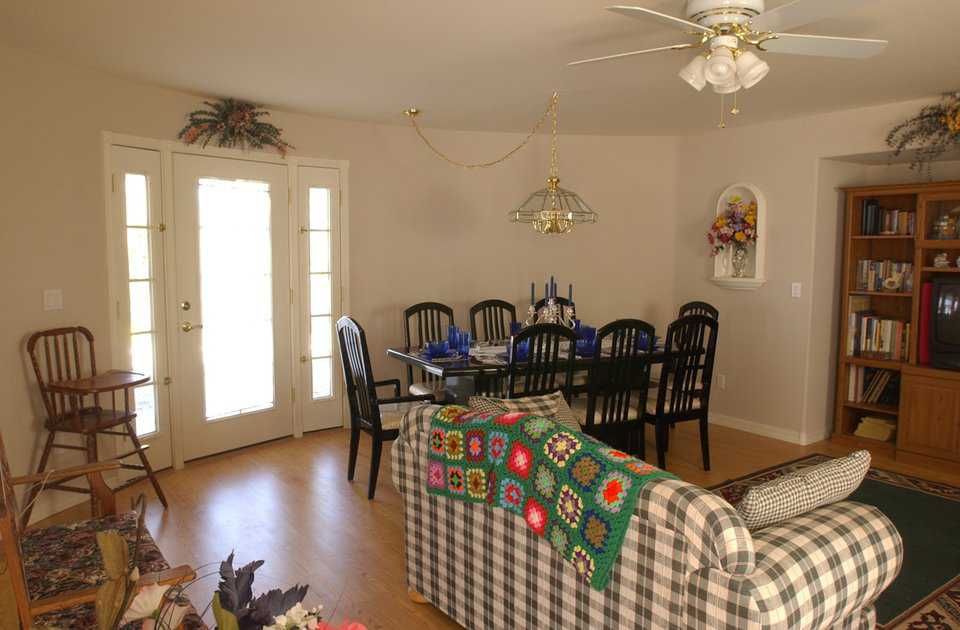
Main living and dining areas — They feature Pergo flooring and a decorative door, with two sidelights, leading to the backyard. An inset entertainment center holds the TV and its companions. (Rick D’Elia)
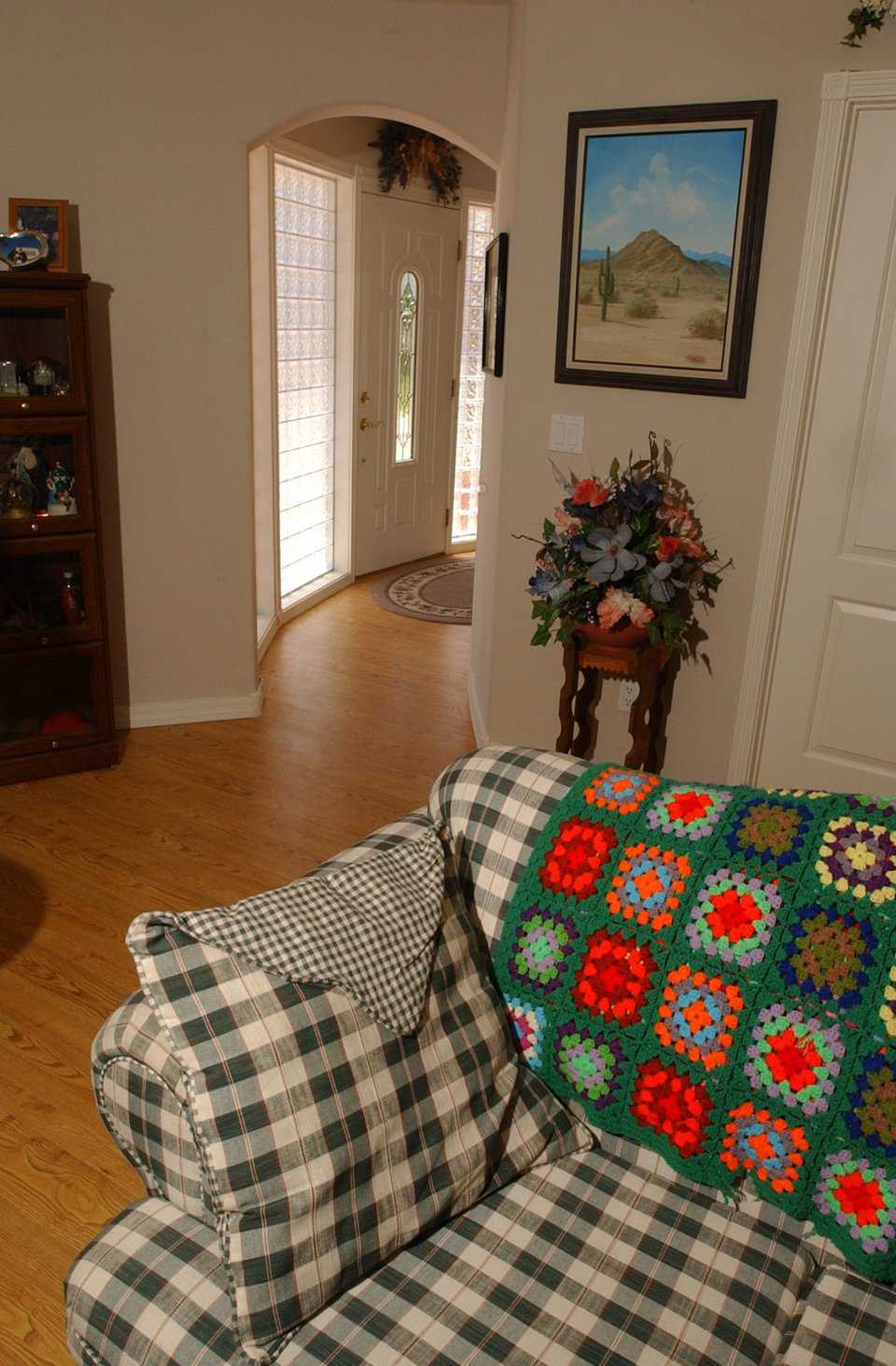
Completeness — Arched entryways and Pergo floors throughout the dome enhance the home’s warmth and continuity. (Rick D’Elia)
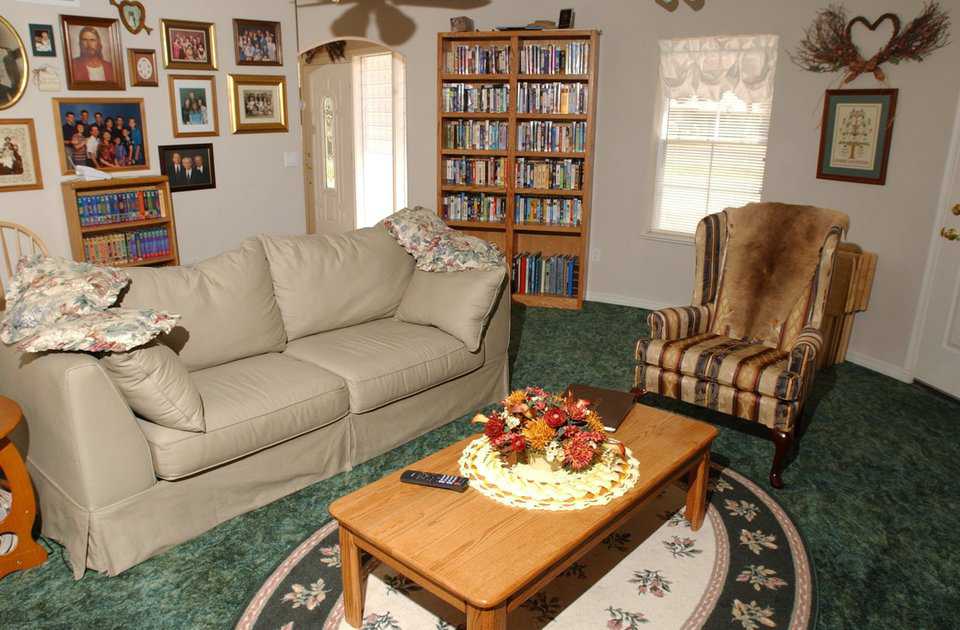
Coziness — Second living area is adjacent to the home’s main entryway. Large bookshelves, entertainment center and a deep green carpet add to the room’s warmth and comfort. (Rick D’Elia)
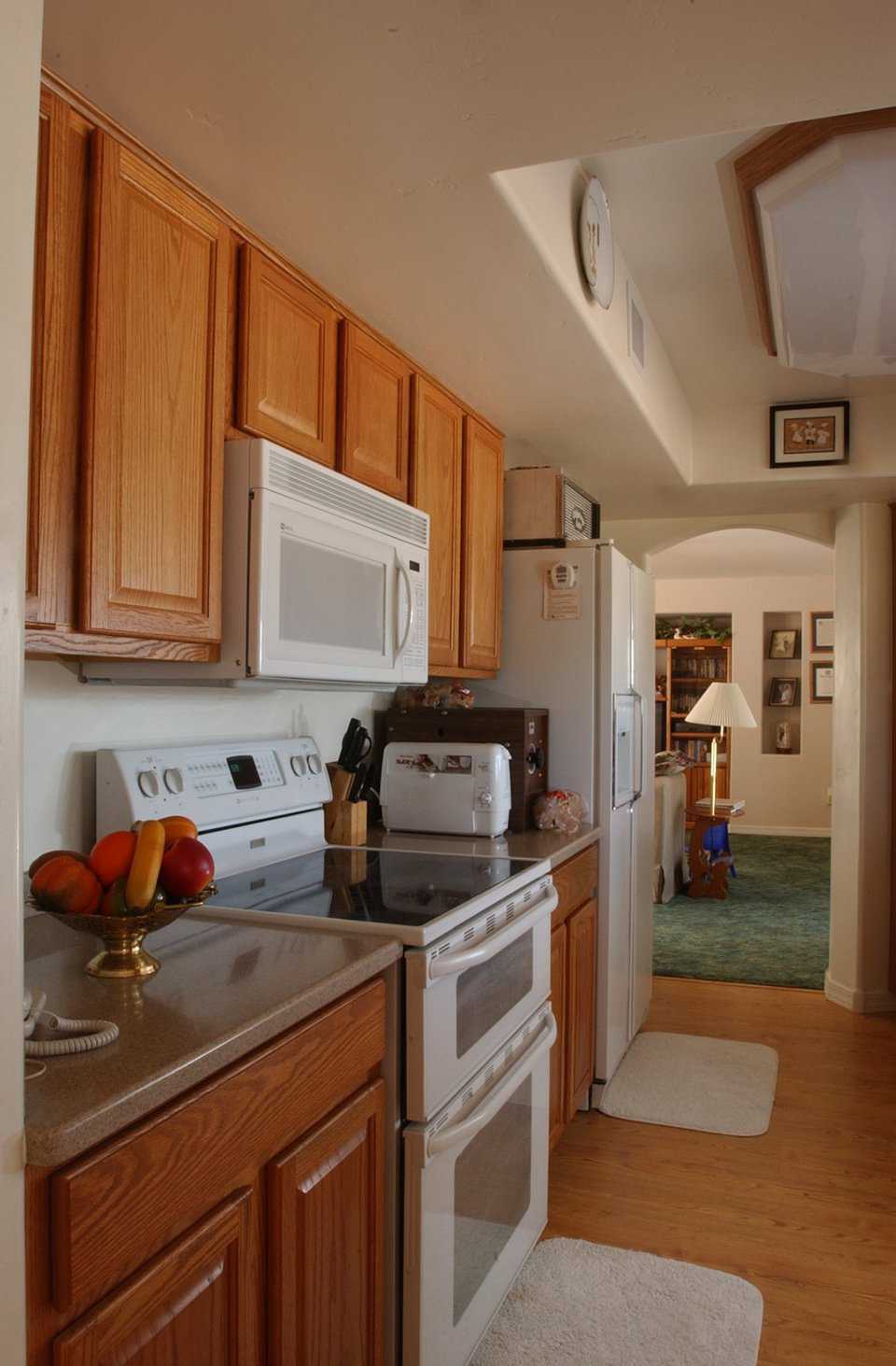
Central kitchen — It’s in the mid-section of the home, providing easy access to both domes. Oak cabinets were bought from a home-improvement store and assembled in sections. (Rick D’Elia)
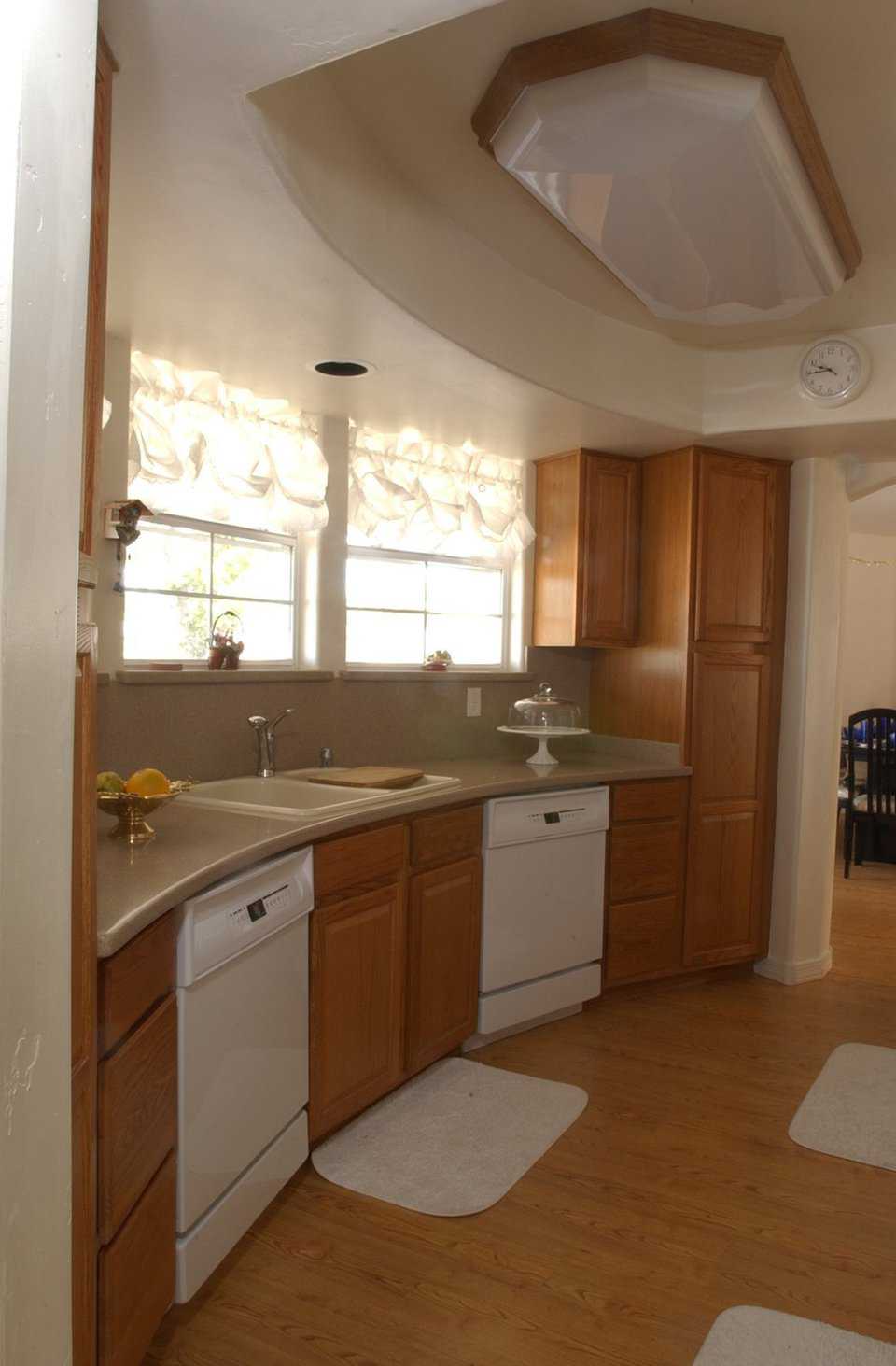
Curvy kitchen — Countertops and cabinets were custom designed to fit the curve of the dome-home’s central core. The countertops are made of Hyplon; it looks like Corian but is much less costly. (Rick D’Elia)
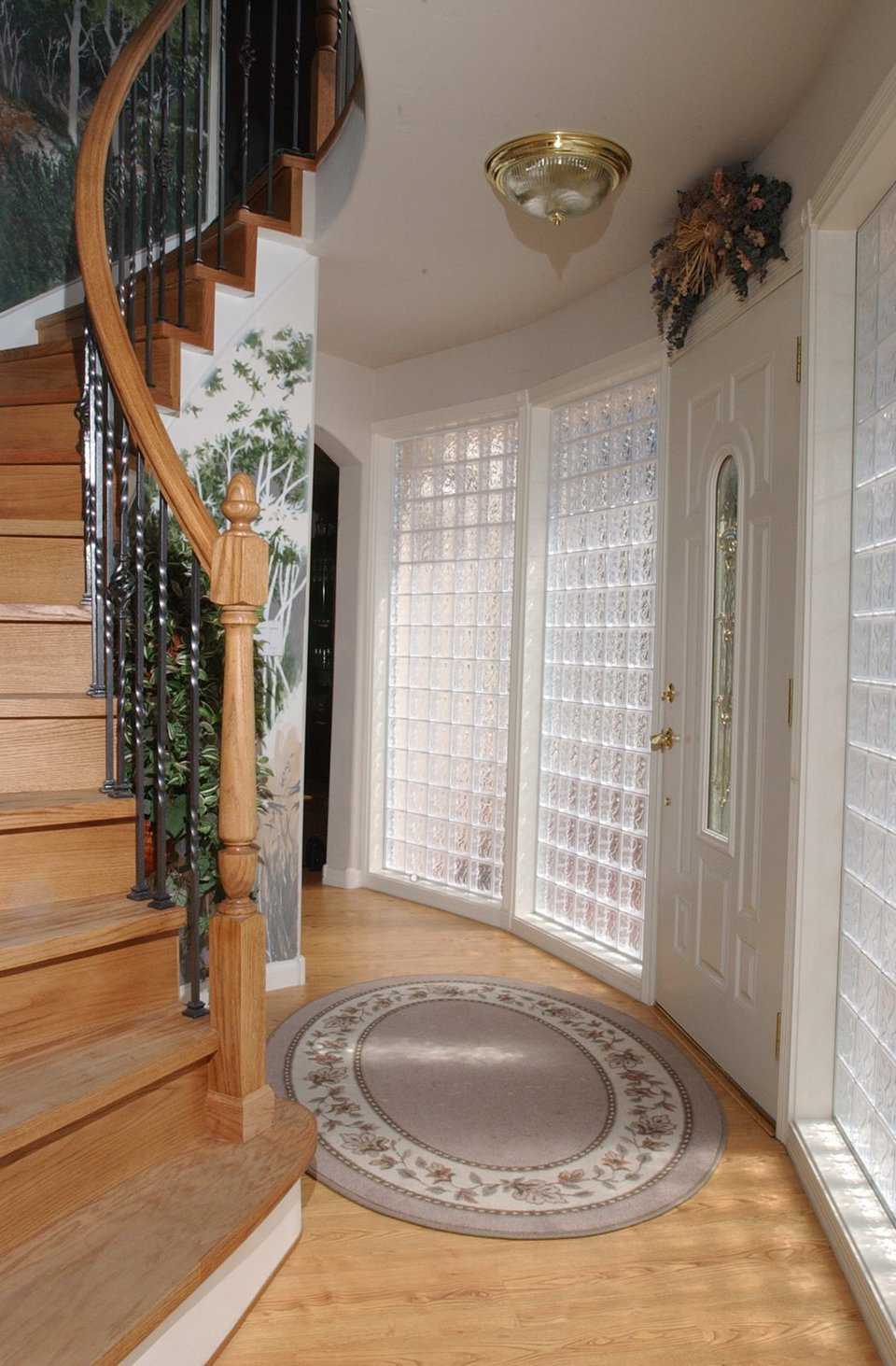
Golden oak wood — That’s the material used for the spiral staircase, built by “Artistic Stairs,” that leads to the upper level hallway with access to the bedrooms. (Rick D’Elia)
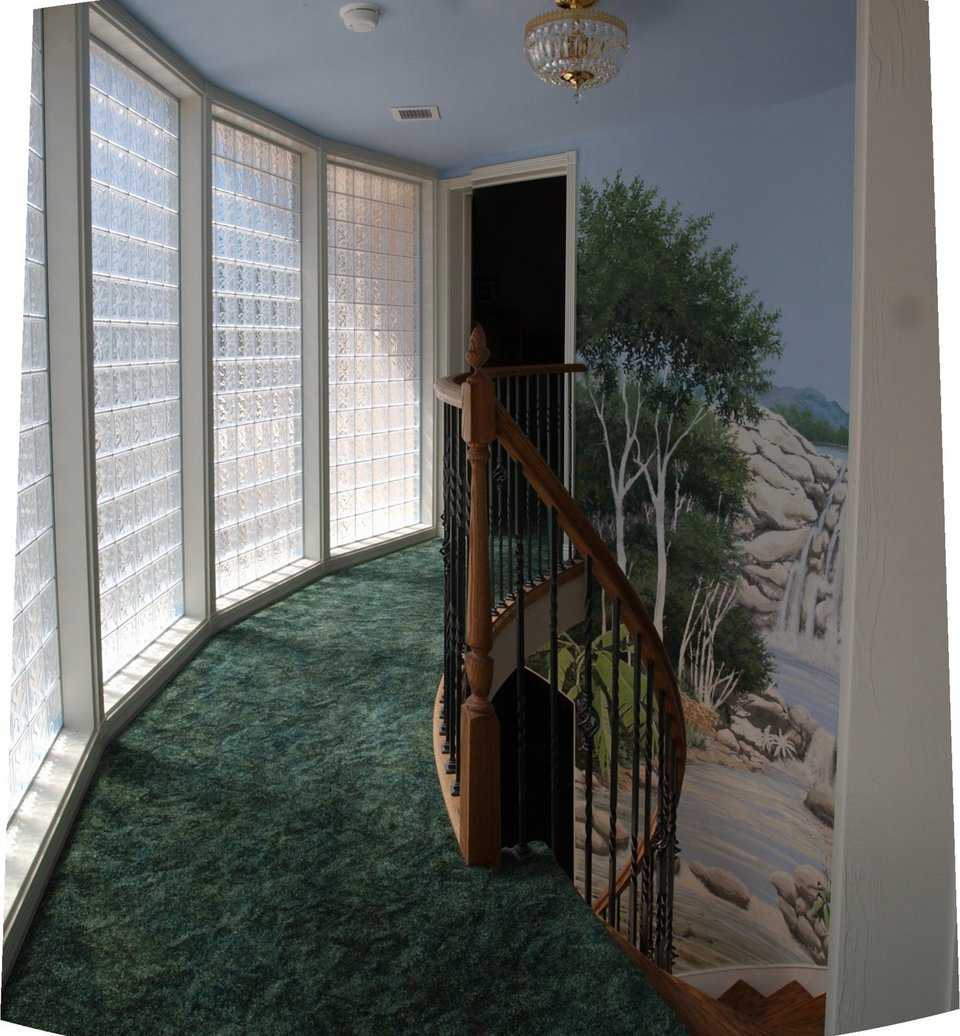
Hand-painted mural — It greets guests and family entering this fabulous Monolithic Dome dream home. (Rick D’Elia)
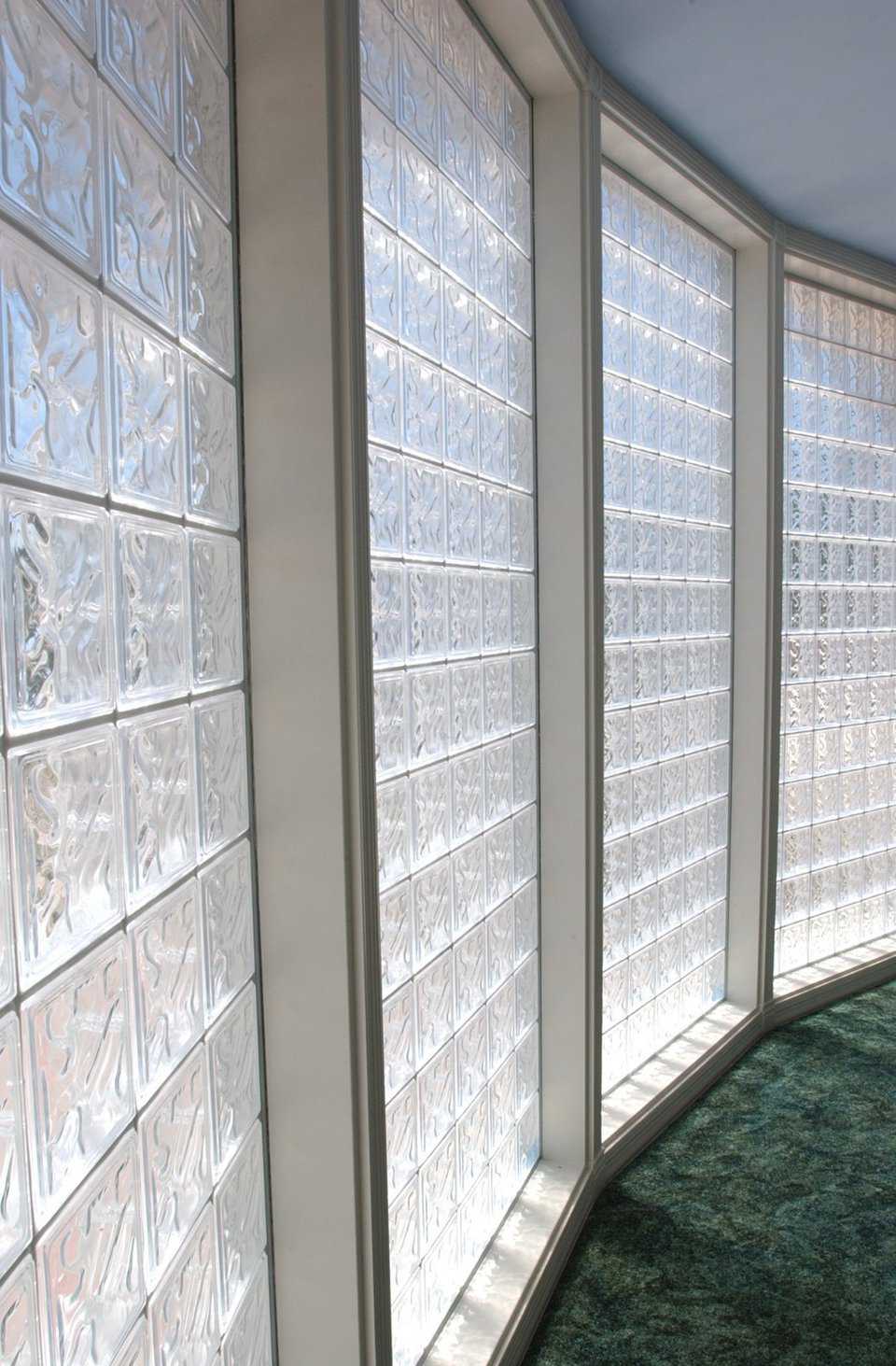
Castle of Light — Abundant sunlight through the synthetic, glass block front entry illuminates this Monolithic Dome home, turning it into a Castle of Light. (Rick D’Elia)
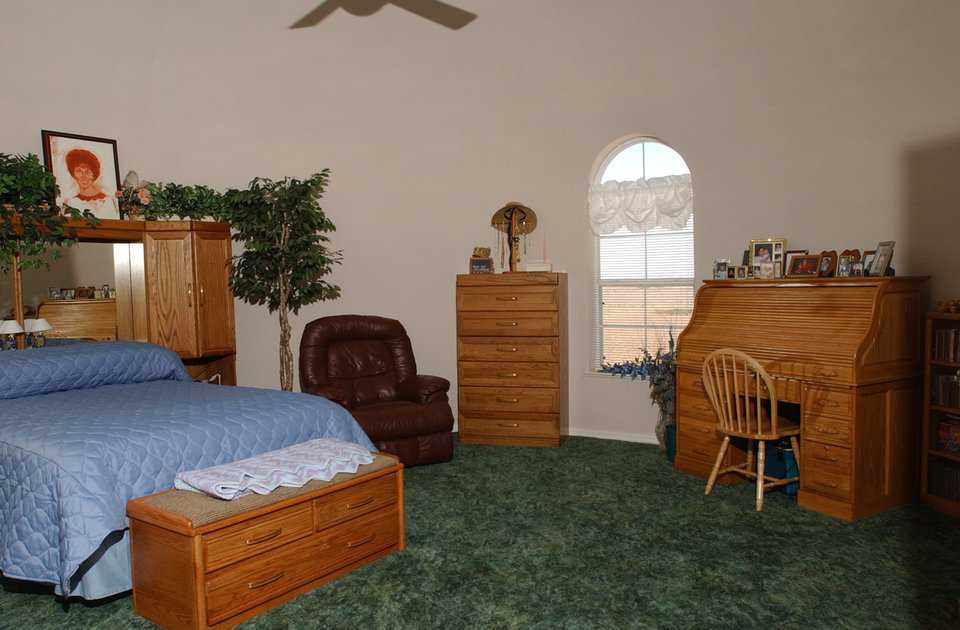
Master bedroom — It has a gracefully arched window and plenty of space for a sitting area and office. (Rick D’Elia)
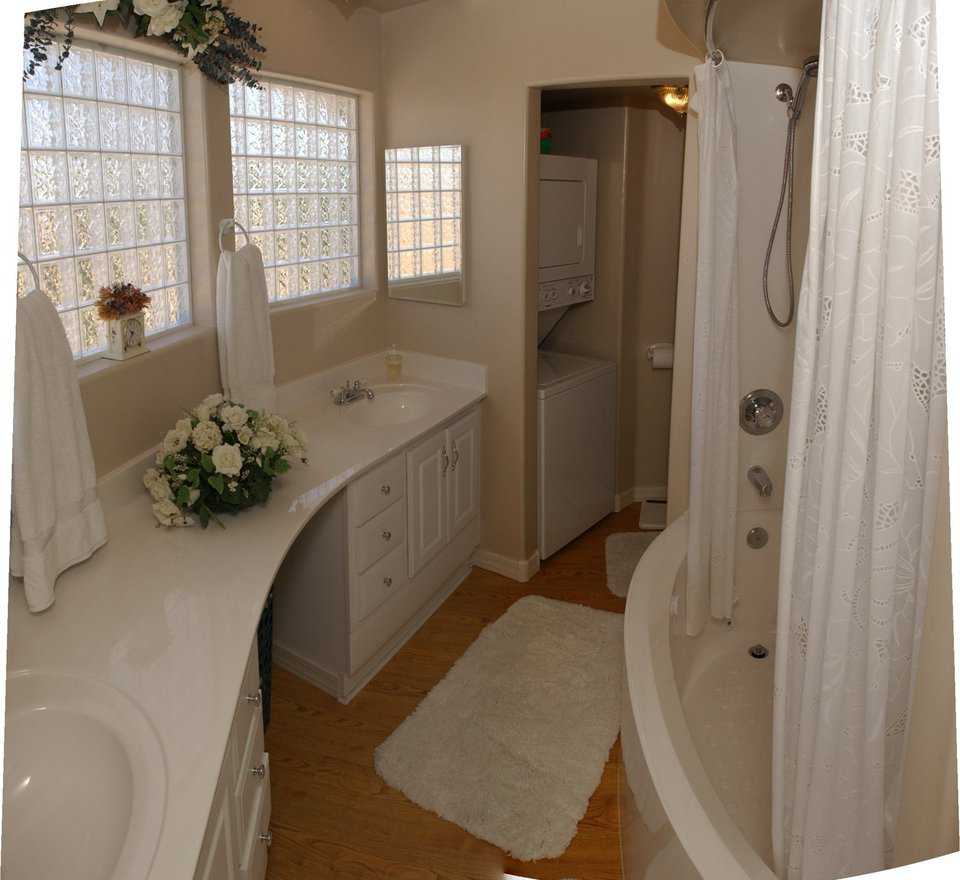
Master bath — Glass block windows allow light to penetrate this sparkling master bathroom. Stackable washer/dryer unit makes laundering convenient. Curved counter tops were custom-made to fit the dome’s curve. (Rick D’Elia)
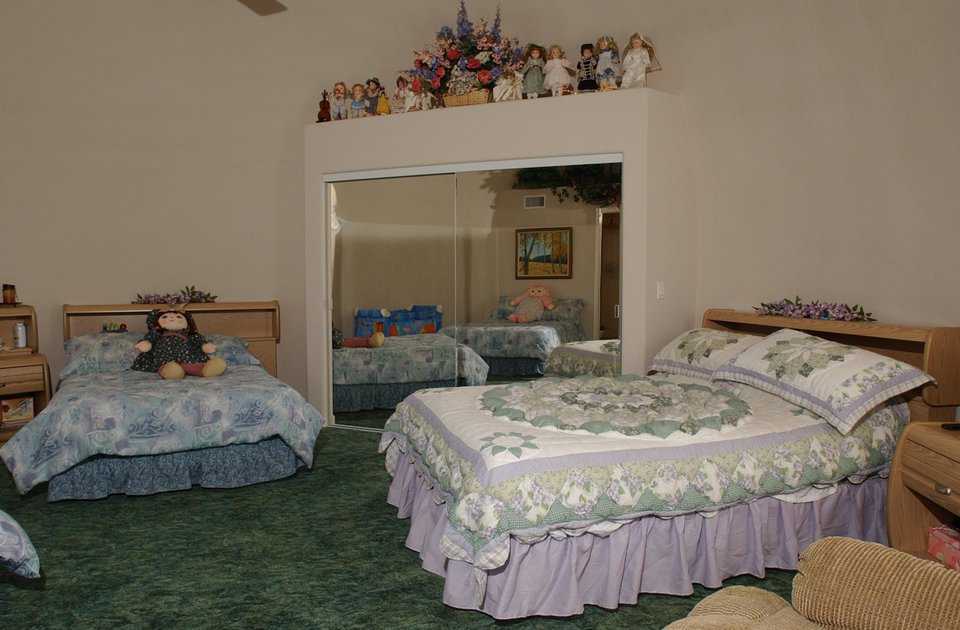
Guest bedroom — It’s large enough for three double beds. The central core of the home is cut back 4 feet into each dome, providing a shelf above the closets. (Rick D’Elia)
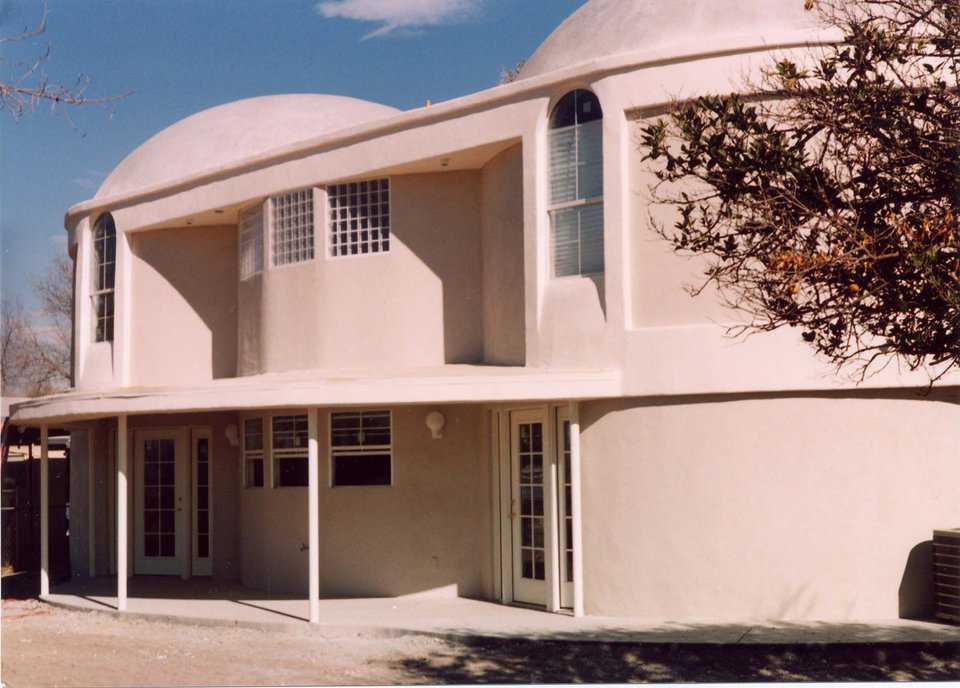
Twin towers — This Monolithic Dome dream home includes two domes, each 23’ in diameter and 7’ apart at center. (Rick D’Elia)
